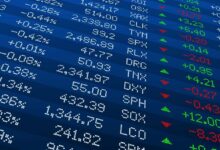Live Forex Spreads: What They Are and How to Use Them: What They Are and How to Use Them

Forex trading is the exchange of one currency for another, with the aim of making a profit from the fluctuations in the exchange rates. Forex traders can access the global forex market through online platforms, where they can buy and sell currencies at any time of the day.
One of the most important factors that affect the profitability of forex trading is the spread. The spread is the difference between the bid and ask prices of a currency pair, which are the prices at which traders can sell and buy currencies respectively. The spread represents the cost of trading, as traders have to pay the spread to enter and exit a trade.
Types of Spreads
There are two main types of spreads in forex trading: fixed and variable. Fixed spreads are predetermined and do not change, regardless of the market conditions. Variable spreads, on the other hand, fluctuate according to the supply and demand of currencies, as well as the liquidity and volatility of the market. Variable spreads tend to be lower than fixed spreads in normal market conditions, but they can widen significantly during periods of high volatility or low liquidity.
Some forex brokers offer both types of spreads, while others only offer one type. Traders should compare the spreads offered by different brokers before choosing a platform to trade on. Some brokers may also charge commissions or fees on top of the spread, which can increase the trading costs.
Live Forex Spreads
Live forex spreads are the real-time bid and ask prices of currency pairs that are displayed on forex platforms. Live forex spreads allow traders to see the current market prices and execute trades accordingly. Live forex spreads can also help traders to identify trading opportunities, as they can indicate the direction and strength of the market trends.
Live forex spreads can vary depending on the currency pair, the time of day, and the broker. Some currency pairs have higher spreads than others, due to their popularity, liquidity, or volatility. For example, the major currency pairs, such as EUR/USD, GBP/USD, and USD/JPY, usually have lower spreads than the minor or exotic currency pairs, such as NZD/USD, USD/ZAR, and EUR/TRY.
The time of day can also affect the live forex spreads, as different trading sessions have different levels of activity and liquidity. For example, the London session, which overlaps with the New York session, is usually the most active and liquid session in the forex market, which can result in lower spreads. The Asian session, on the other hand, is usually less active and liquid, which can result in higher spreads.
The broker is another factor that influences the live forex spreads, as different brokers have different pricing models and sources of liquidity. Some brokers may have access to more liquidity providers than others, which can result in more competitive spreads. Some brokers may also use different types of execution methods, such as market execution or instant execution, which can affect the speed and accuracy of filling orders.
How to Use Live Forex Spreads
Live forex spreads can be used by traders to enhance their trading strategies and performance. Here are some tips on how to use live forex spreads effectively:
- Compare live forex spreads across different brokers and platforms to find the best deal for your trading style and goals. You can use online tools such as Myfxbook or Axi to see live forex spreads from various brokers in real time.
- Monitor live forex spreads regularly to identify changes in market conditions and adjust your trading accordingly. You can use online tools such as DailyFX to see live forex rates on currencies, commodities, indices, and cryptocurrencies.
- Use live forex spreads to determine your entry and exit points for your trades. You should aim to enter a trade when the spread is low and exit a trade when the spread is high. You should also consider your risk-reward ratio and stop-loss level when setting your target price.
- Use live forex spreads to calculate your potential profit or loss for your trades. You should subtract the spread from your gross profit or add it to your gross loss to get your net profit or loss. You should also factor in any commissions or fees that your broker may charge.
Conclusion
Live forex spreads are an essential aspect of forex trading that affect your trading costs and profitability. By understanding what live forex spreads are and how they work, you can use them to your advantage and improve your trading results. You should always compare live forex spreads across different brokers and platforms, monitor them regularly for market changes, use them to determine your entry and exit points, and calculate your potential profit or loss for your trades.







